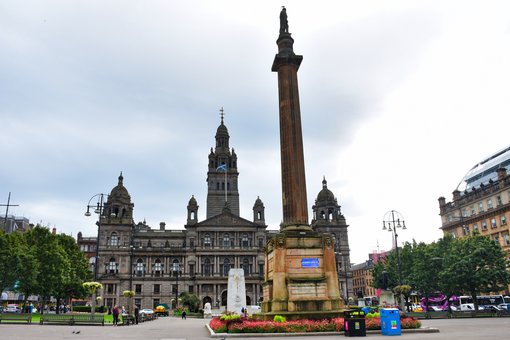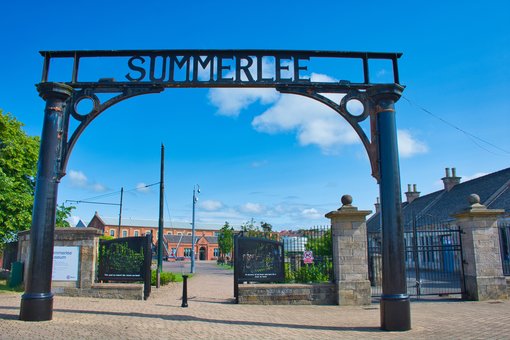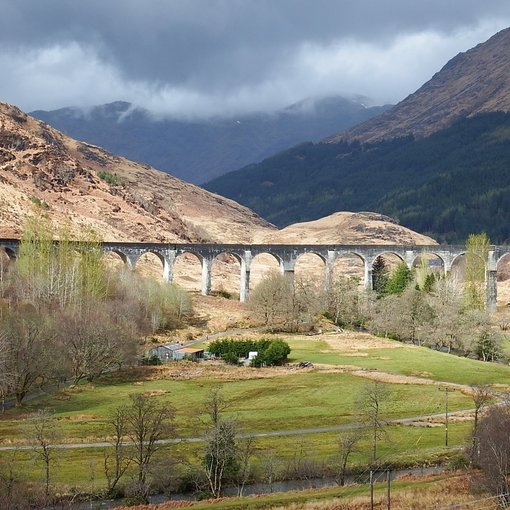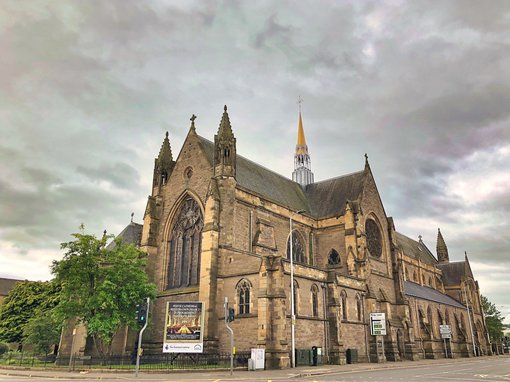If you have a few days free while in Edinburgh, you can spend it visiting the attractions and villages in Fife.
Culross
The medieval village & Royal Burgh of Culross (pronounced Coo-riss) is in the Kingdom of Fife and one of those charming villages that you fall in love with at first sight. Located on the northern banks of the Firth of Forth, it is the place that everyone wanders through on a sunny Sunday afternoon.
A free car park is a big bonus in such a popular village. There is a kids playground, and picnic area on the esplanade.
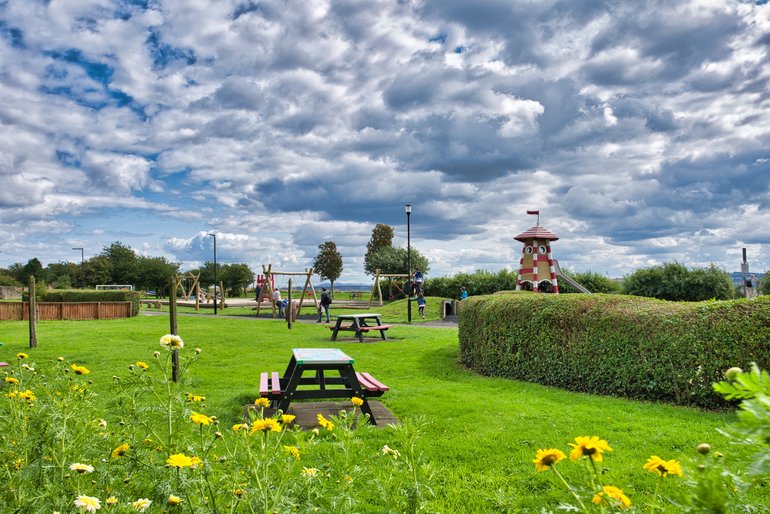
The kids' playground is one of the most popular areas on the weekend
Culross Palace
Culross Palace is on the main street, just across from the esplanade. It isn't actually a palace, but the name was born out of a typo, as it should have been a place.
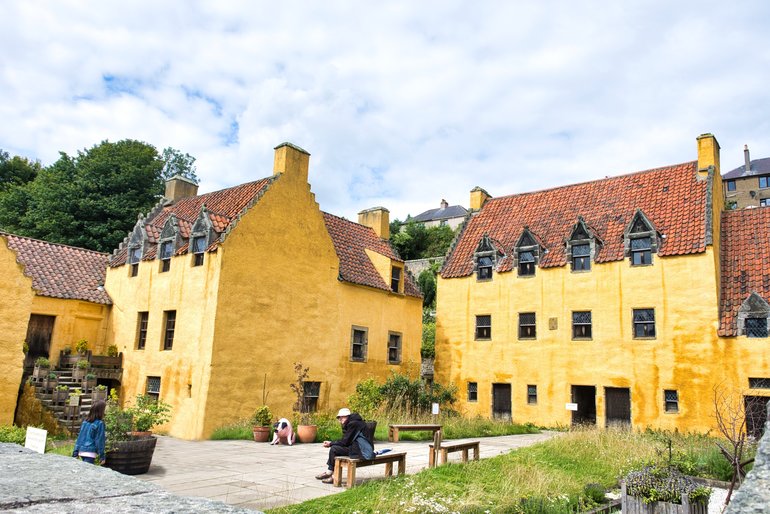
The ochre-coloured buildings that make-up Culross Palace
Dating from the 17 and 18th Centuries, Culross Palace is part of the National Trust of Scotland. When you visit, you can see the great examples of painted ceilings. You also explore the gardens behind the buildings and have refreshments in Bessie’s Café.
If you are in Culross on the 30th November, you can shop at the Christmas Market in the Palace courtyard.
Admiral Thomas Cochrane
Just outside the Palace is the bust of Admiral Thomas Cochrane. He wasn't born in Culross, but grew up in Abbey House and is the inspiration for the fictional navy hero, Horatio Hornblower.
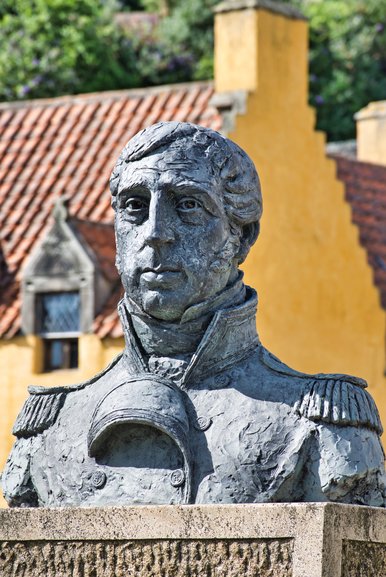
The statue of Admiral Cochrane stands in front of the Palace in the square
He became the 10th Earl of Dundonald upon his fathers' death in 1831 and is buried in Westminster Abbey. He also served as an MP and was a great inventor.
The Town House
When you follow the cobblestones roads, it will lead you to the Town House. There is a gift shop paying attention to the TV series Outlander which has used Culross for filming. You can also see a painted ceiling in the gift shop.
The shop on the other side is dedicated to the photography work of Graham Harris Graham Fine Art Photography. His photography is for sale in different formats showing Scotland at its finest.
Mercat Cross
Turning left the road will lead you up the hill. It is here you'll find the Mercat Cross, Culross Abbey and the Parish Church.
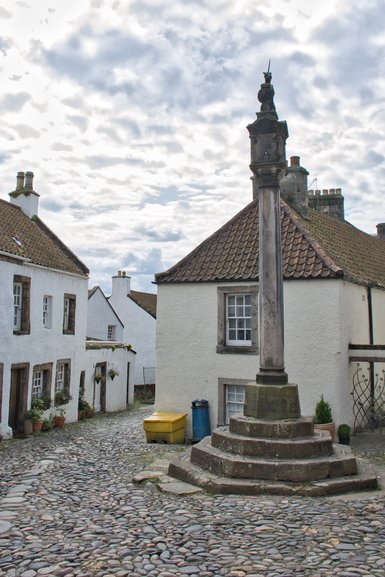
Fans of Outlander will recognise this area of Culross
Scottish for Market Cross, Mercat Crosses are found throughout village, towns and cities in Scotland. It denotes where permission was given, by a monarch, a bishop or a baron, to hold a market, and dates from at least the 17th Century.
The one in Culross was seen on the first series of Outlander as Culross was the town of Cranesmuir.
Culross Abbey
Once you're near the top of the road, you have the ruins of the Culross Abbey to explore.
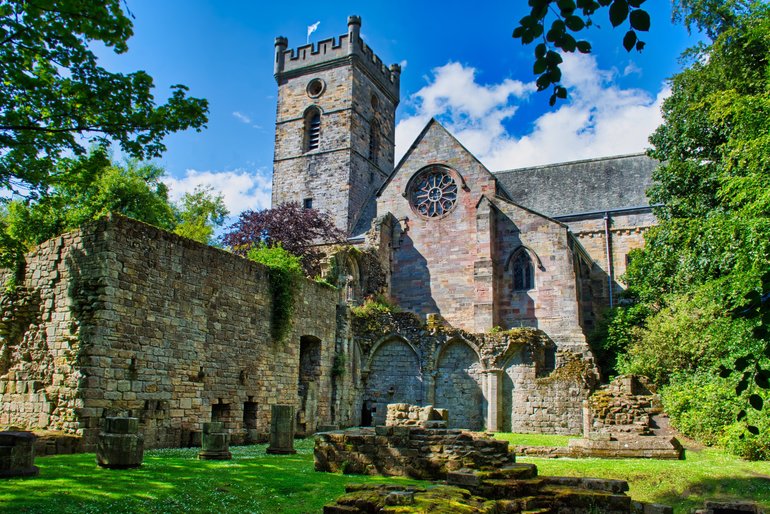
The ruins of Culross Abbey sit peacefully on top of the hill
Culross Abbey was founded in 1217 but was built on top of an earlier Pictish church from the 6th Century. By 1633, Reformation, and the natural dying out of monks led to the ruins that you now find.
There isn't much to see although you can climb the metal stairs to the next level. The east end still survives today as the Culross Parish Church.
The Parish Church dates back to the early 1630s and services are still held inside today. The doors should be open for you to visit. Inside you can read about the history of the Abbey from information boards.
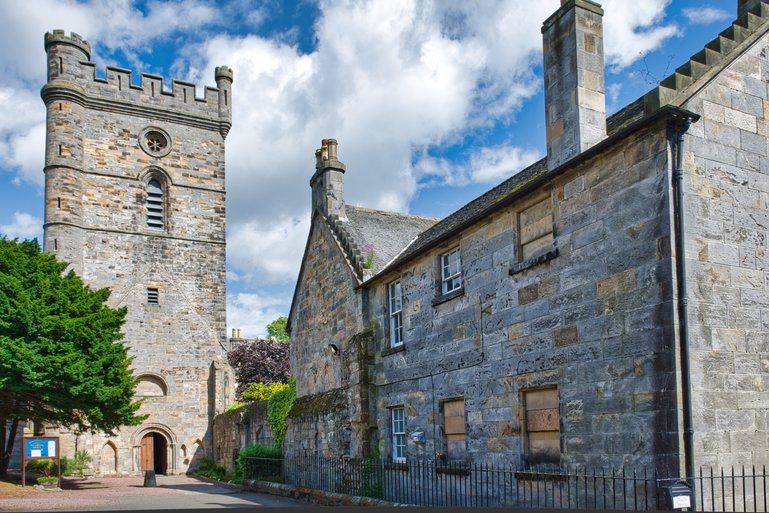
Culross Parish Church at the very top of the hill
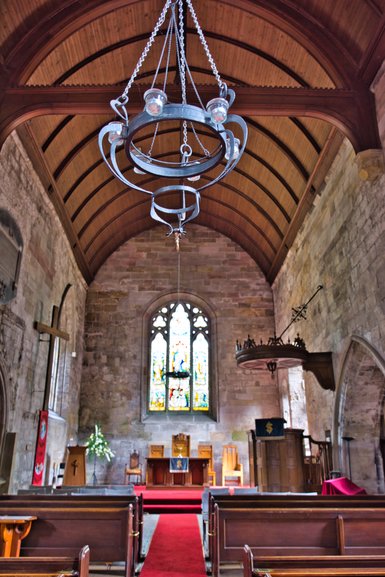
The beauty is in the simpleness of the Parish Church
You can also see the memorial Tomb House of Sir George Bruce, Laird of Carnock, his wife, and eight children.
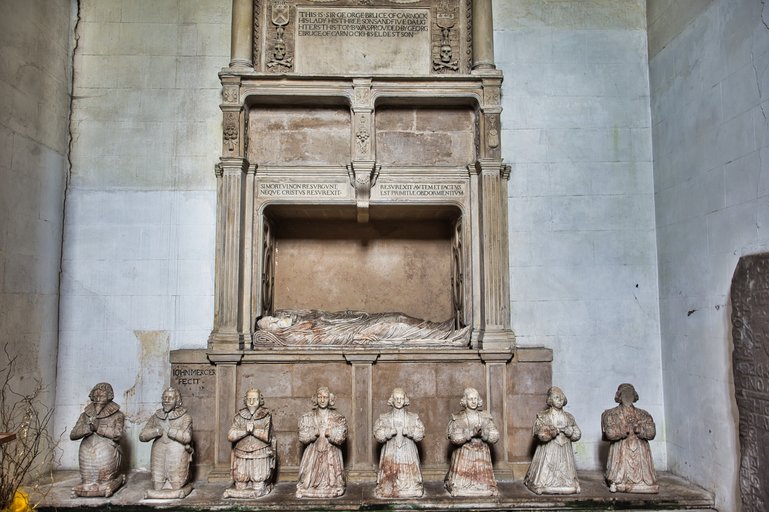
The effigies of Sir George Bruce and his family
There is also a legend connected to the Abbey. Legend says that there is a man sitting in the tunnels beneath the Abbey waiting for someone to find him upon which that person will receive treasure. One story is that a blind piper went in with his dog. Playing his pipes, he travelled at least three-quarters of a mile searching, but although the dog returned to the surface, the blind piper was never seen or heard from again.
Dunfermline
If you do have a few days to spend in Fife, you could easily spend one of them here in Dunfermline.
Dunfermline Abbey and Palace
Dunfermline Abbey is full of so much Scottish history. One of the volunteers may give you a detailed description of the history, Robert the Bruce and the Abbey.
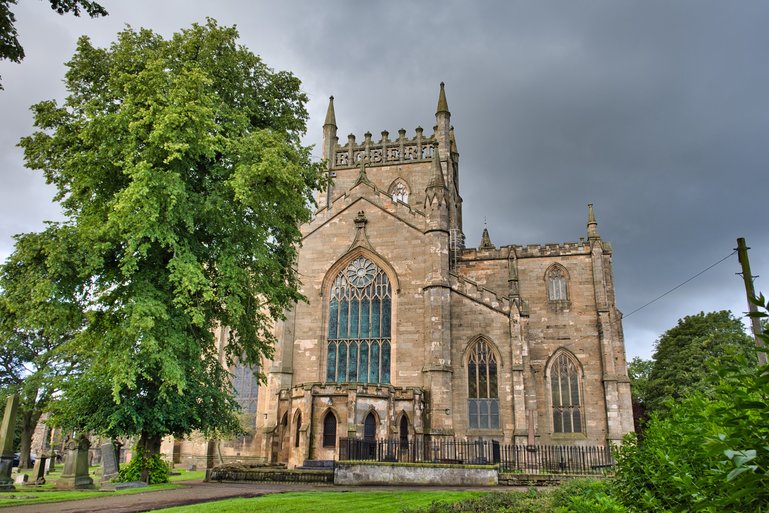
Dunfermline Abbey with the former Shrine of St Margaret
Margaret founded the Priory here in 1070 on the site that she was married to Malcolm the III. She was an Anglo-Saxon Princess but was born in Hungary after her family were exiled.
She was a pious, charitable Queen who established a ferry across the Firth of Forth for pilgrims and this is where the names of North and South Queensferry have derived from.
Her shrine was at the back of the Abbey, and in 1250, she was canonised because of the miracles that were said to have been performed by her to the people who prayed at her shrine.
Unfortunately, her relics were dispersed and lost after the Scottish Reformation, but hopefully, we will never forget her, and I found her story inspirational.
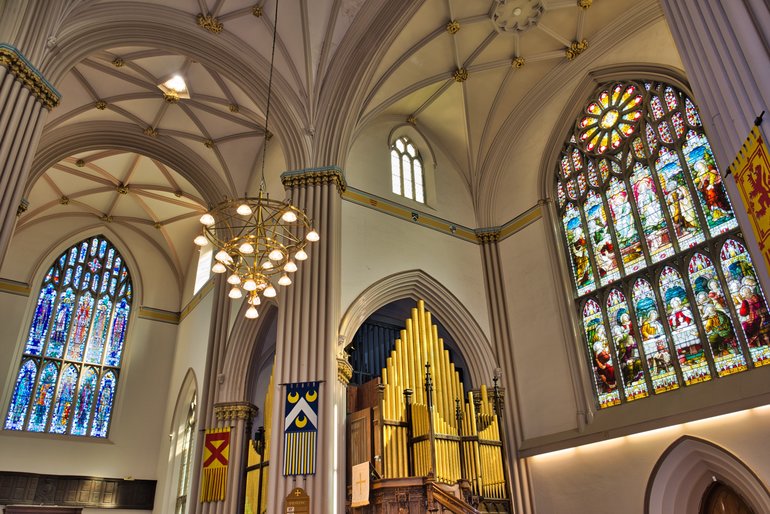
Inside Dunfermline Abbey
Charles the First, was the last monarch to be born in Dunfermline Palace in 1600 and Robert the Bruce, King of the Scots, was buried in this Abbey.
The original tomb photographed below was destroyed during the Scottish Reformation. During the clearance before the building of the Abbey, you see today, parts of the marble tomb were discovered, so people have been able to recreate it today.
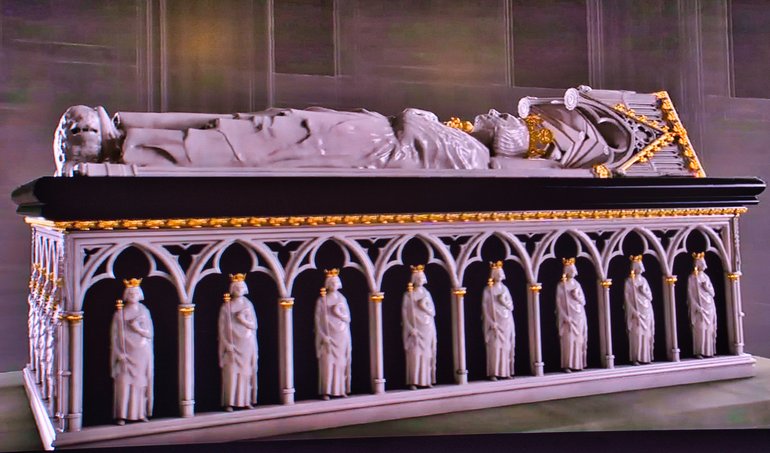
What Robert the Bruce's tomb would have looked like
His bones were recovered, verified and now lie under the pulpit.
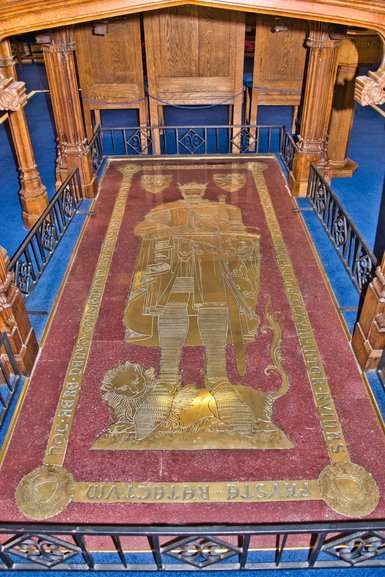
The last resting place of Robert the Bruce
Pittencreiff Park
Pittencreiff Park is right across the road from the Dunfermline Abbey. Andrew Carnegie, after buying the land in 1902, gifted it back to the townspeople he loved. Peacocks roam the grounds that you can also walk through, looking for Andrew Carnegie's statue, the Glen and the Peace Park, which has the Peace Pole, erected before the Dalai Lama's visit in 2004.
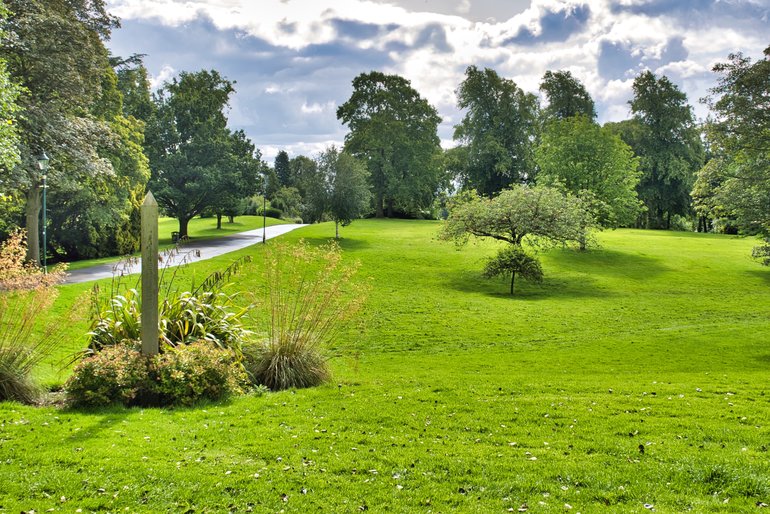
Peace Pole in the Park just across from the Café
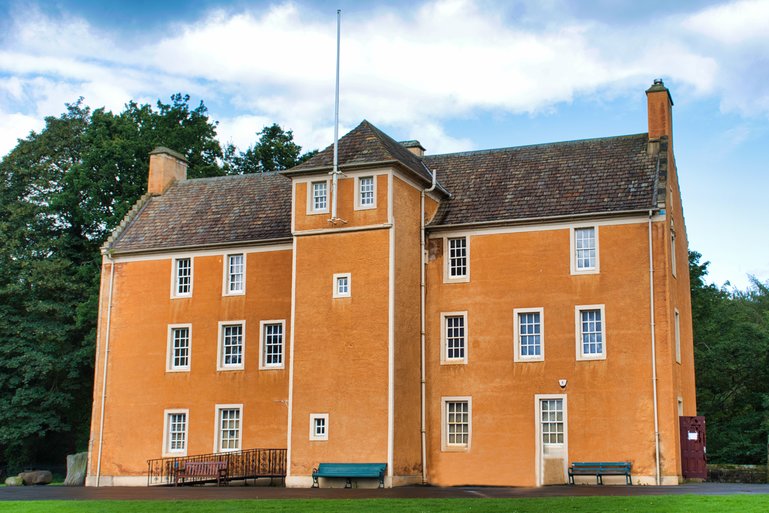
In the middle of the Park is the Pittencrieff House Museum
Another great free thing to do is the Pittencrieff House Museum. You have exhibitions where you can learn what the land was like 350 million years and what lived here through the ages.
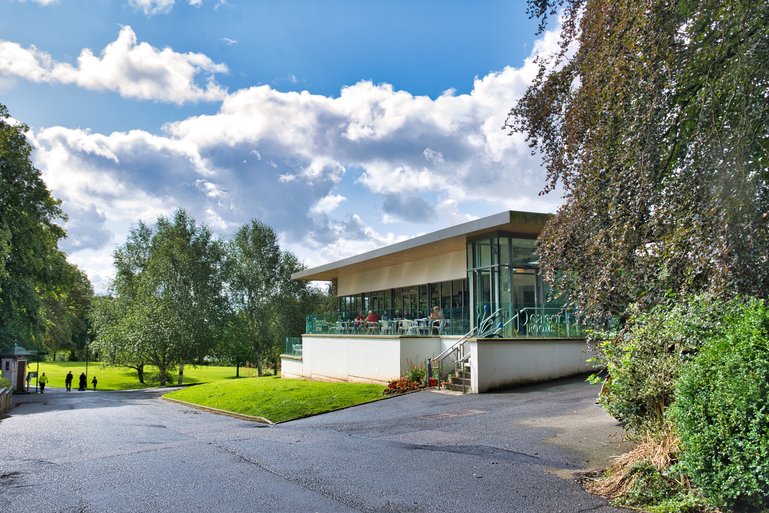
Take a break from the walk and refresh in the Peacock Room Café
Rose Gardens, Glasshouses and St. Margaret's Cave covers all ages. St. Margaret's Cave may be a bit eerie with the haunting sound effect of monks singing.
The Andrew Carnegie Birthplace Museum
I'll admit that I knew the name Andrew Carnegie, but I didn't know anything about his life or where he was born, and this is where the Andrew Carnegie Birthplace Museum is invaluable.
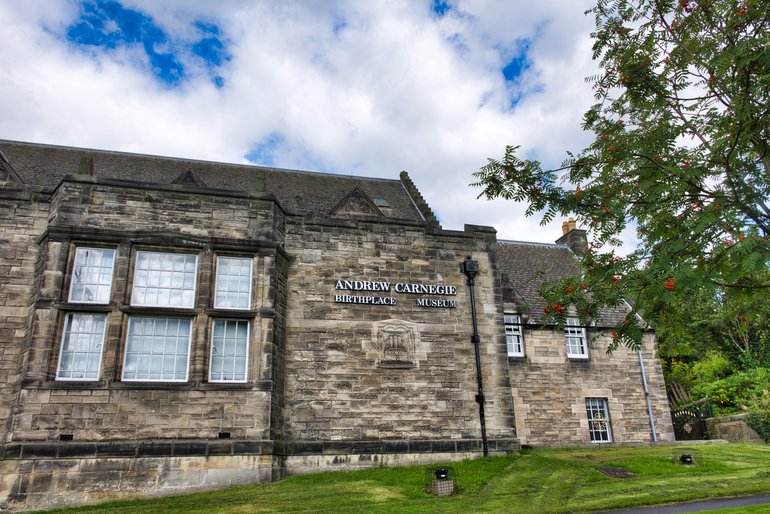
The front of Andrew Carnegie's Birthplace Museum
From humble beginnings, in Dunfermline, he read books and took chances to become one of the richest men in the world.
He has built a total of 2,509 public and university libraries between 1883 and 1929, with the first being constructed in Dunfermline, giving back to town he was born in.
The Museum includes the cottage where he was born, furnished as it was nearly 200 hundred years ago as the weaver's cottage, complete with a loom downstairs, as that was his father's trade.
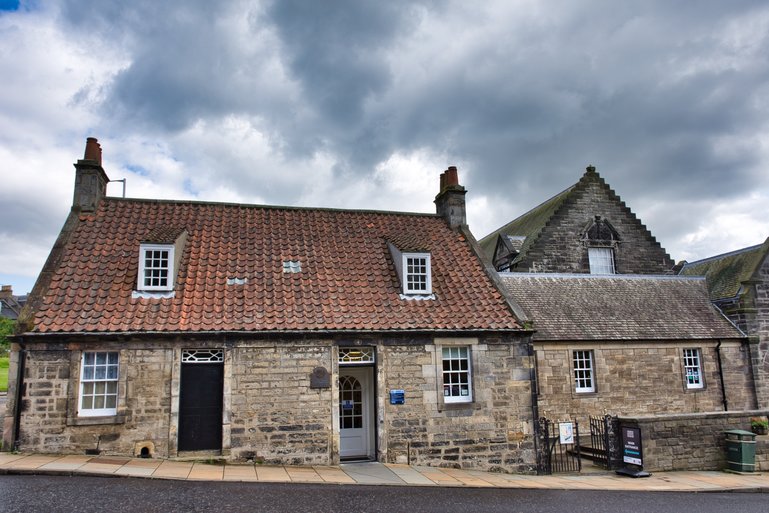
At the back of the Museum, is Andrew Carnegie birthplace cottage, and the room he was born upstairs
This is another free museum and well worth the visit. You can learn so much about Andrew's life through the collections giving you an insight into the family man and philanthropist he was.
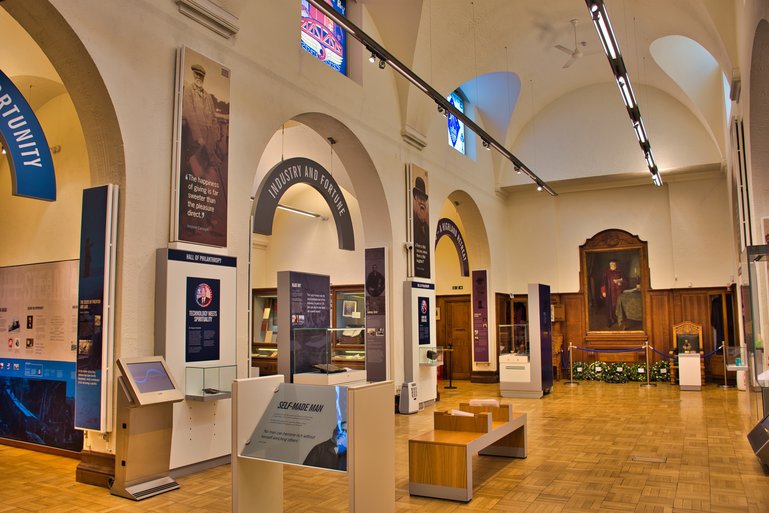
Inside the Museum with fantastic collections full of information
Falkland
The little village of Falkland has two things that tourists love, a Palace, and being used on the TV series Outlander. You could spend an afternoon or one of your days in this village in Fife.
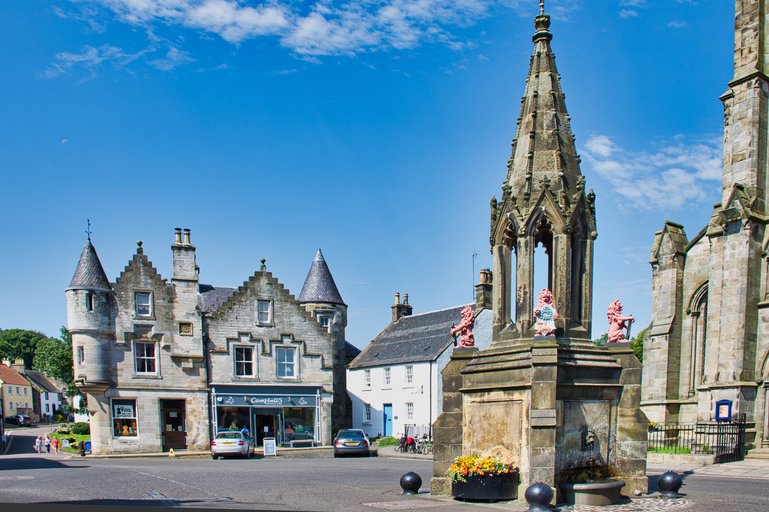
Does anyone recognise this spot from Outlander?
Falkland was used as a stand-in for Inverness in the TV series Outlander. It was at this fountain that the ghostly figure of Jamie looked up at where Claire was staying.
Falkland Palace
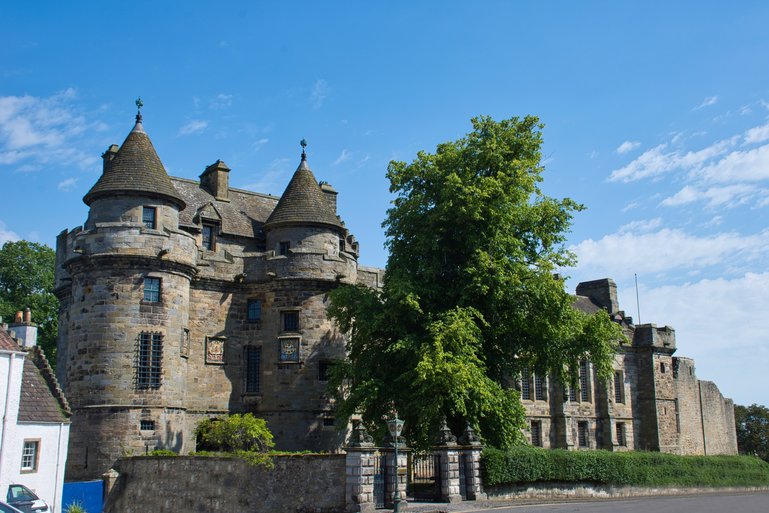
One of the most impressive Palace's in Scotland, Falkland
There are gardens to explore as well as the Falkland Palace, and you could easily spend a couple of hours here or more.
Falkland Palace became a Royal home during the times of James IV and James V in the early 16th Century, through renovations to the existing Castle. It had been originally a hunting lodge in the 12th Century before being expanded in the 13th Century.
The oldest tennis court in the United Kingdom is located at Falkland Palace which was completed in 1541. Mary, Queen of Scots, used to play, causing a scandal at the time for wearing men's breeches.
During the Cromwell years, the Palace took a battering following a fire and then left in ruins. It wasn't until 1887 that restoration began under John, the 3rd Marquis of Bute and it is thanks to him that we have the Palace as it is today.
Aberdour Castle
Aberdour Castle is another place to visit if you're a fan of Outlander. It was used as the place where Claire tended to Jamie, aiding his recovery from the hands of “Black Jack” Randall.
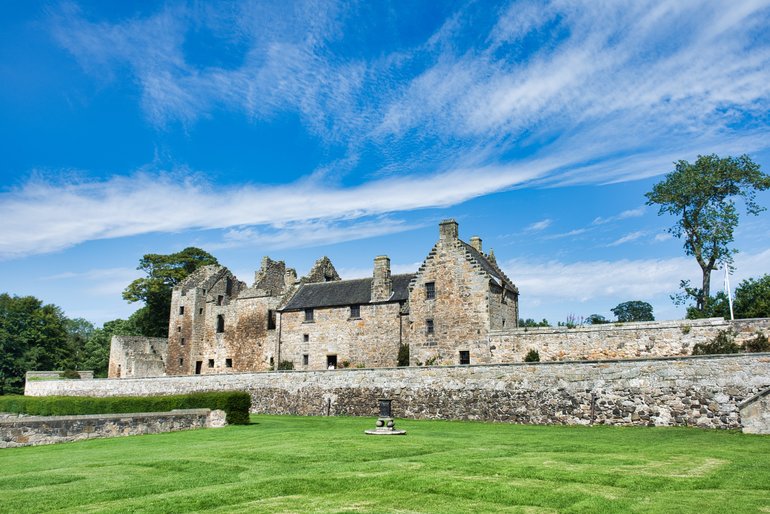
Aberdour Castle and grounds
Part of the Castle is in ruins, but some parts have stood the test of time and one is in the room with the painted ceiling which dates to the 17th Century.
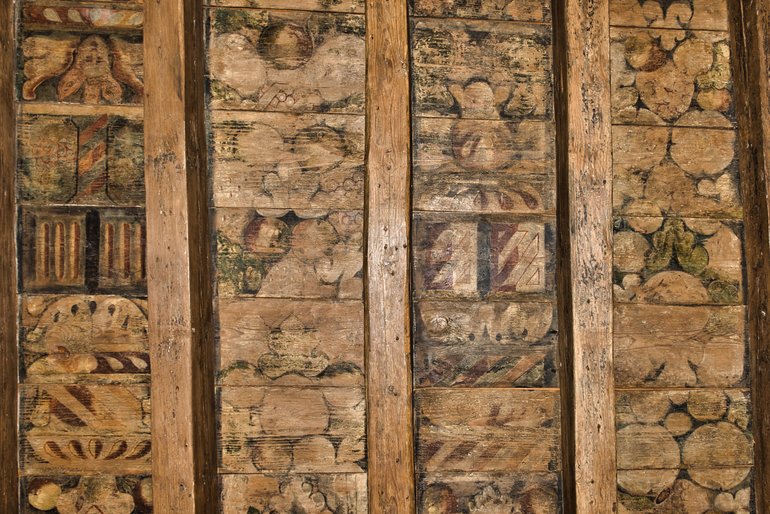
Lying on the floor and looking up is the best way to see the painted ceiling
Once again this Castle dates back to the 12th or 13th centuries, which was then extended on over the following centuries.
Walled and terraced gardens, as well as a doocot, or pigeon house, surround three sides of the Castle.
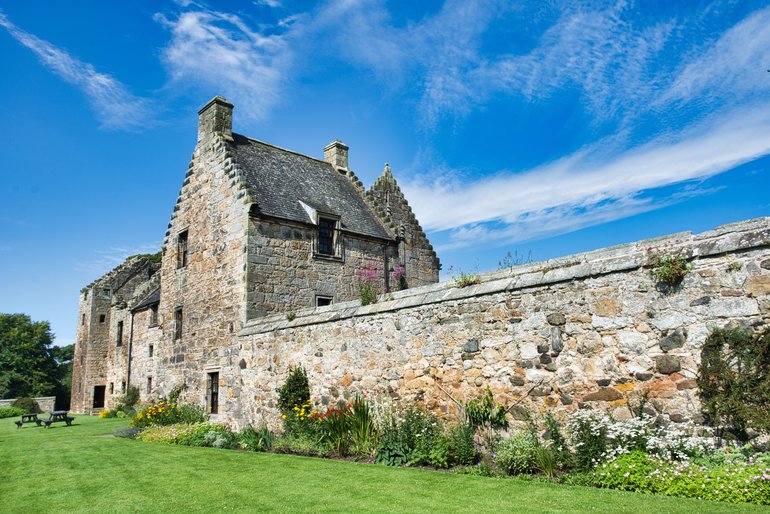
There are picnic tables at the rear of the Castle overlooking the gardens
There is limited parking here, but it does have a cafe and outdoor seating on a nice day. You can easily fit it into one of your days touring around Fife.
St. Andrews
The main street of St. Andrews has pay and display parking. There are shops, cafés and the Holy Trinity Church, which is so colourful with flowers in the garden and hanging pots everywhere.
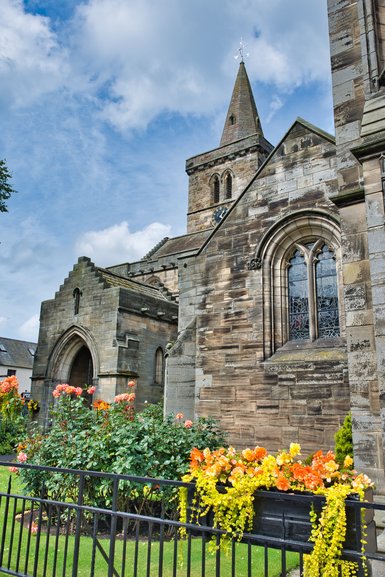
On Main Street is the colourful Holy Trinity Church
St. Andrews Cathedral
The St. Andrews Cathedral was founded to supply more accommodation than the smaller church that stood here afforded. New work began in 1158 and continued for the next century.
Wandering around the grounds of the largest Cathedral in Scotland, you'll be amazed at the size. It's hard to imagine how big it was from the ruins that are left today.
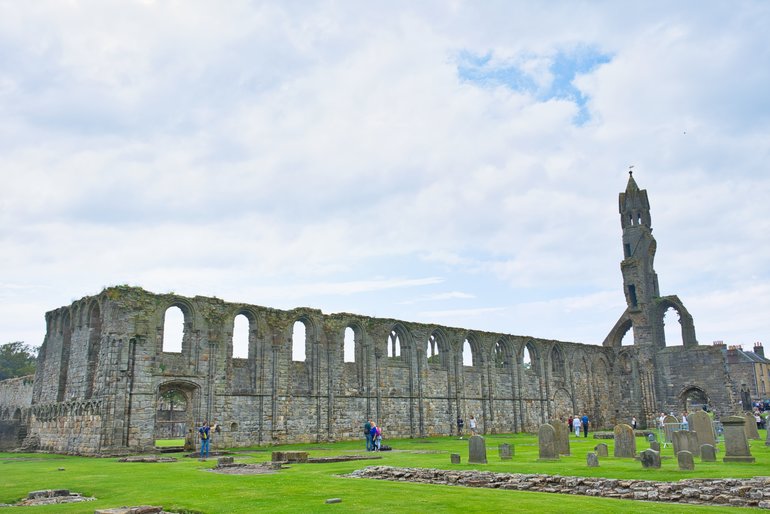
Part of the St. Andrew's Cathedral and Churchyard
It's free to walk the grounds and explore the old cemetery, but if you want to climb up St. Rule’s Tower, for the views over St. Andrews or visit the Museum, you'll have to pay admission.
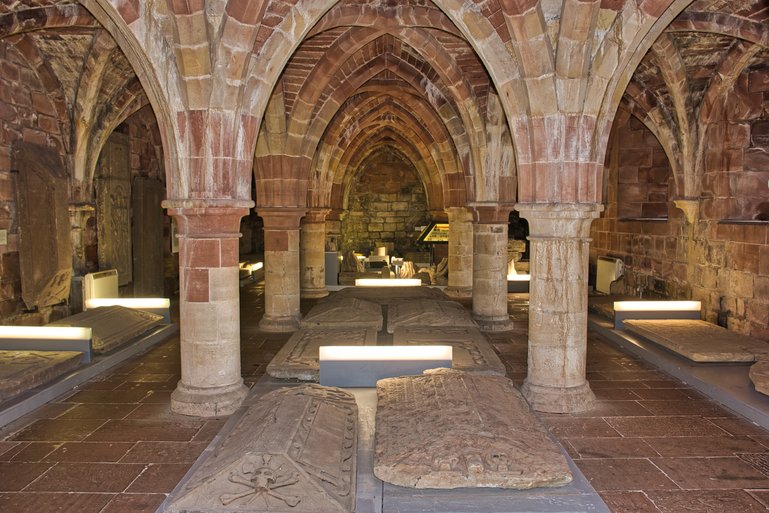
The Museum is down in the cloisters and has old tombstones and stonework from the Cathedral ruins
St. Andrews Preservation Trust Museum
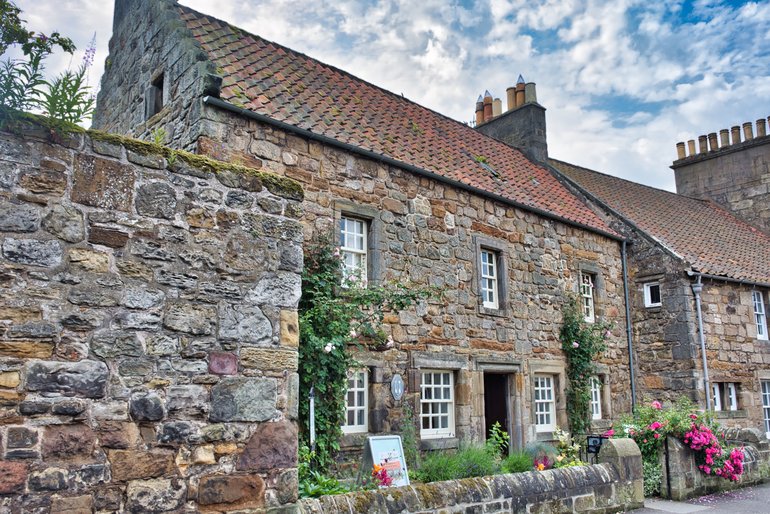
An unassuming cottage houses the St Andrews Museum
The St. Andrews Preservation Trust Museum is another excellent free Scottish Museum. The Museum is in a beautiful 17th Century home featuring exhibits from the regions past.
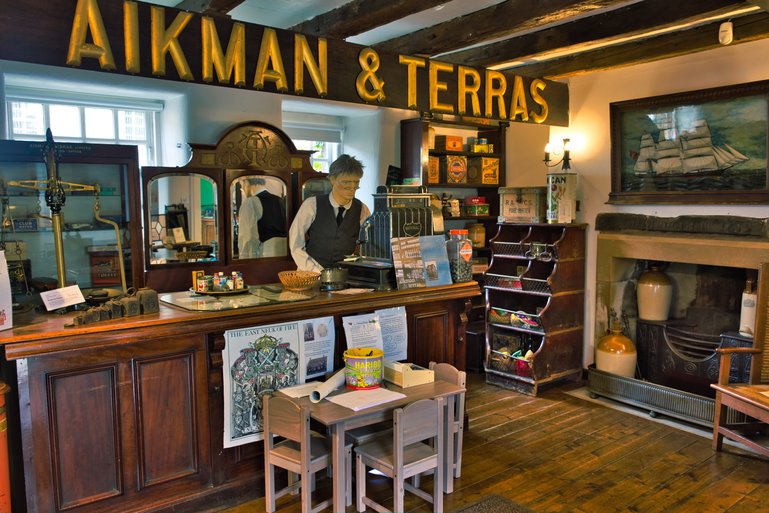
The general shop exhibition inside the Museum is just one showing its past
Out the back are award-winning gardens and outhouses with more information on how people lived a hundred or more years ago.
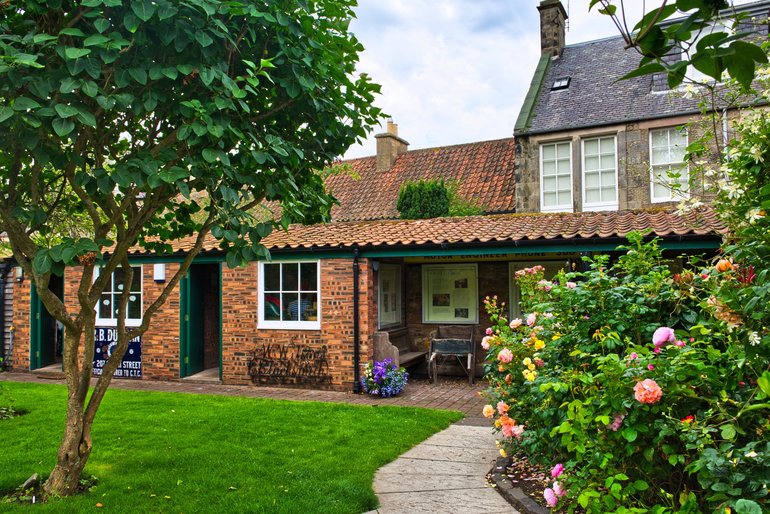
The tranquil gardens at the back of the house
Upstairs holds another exhibition that changes regularly.
St. Andrews Castle
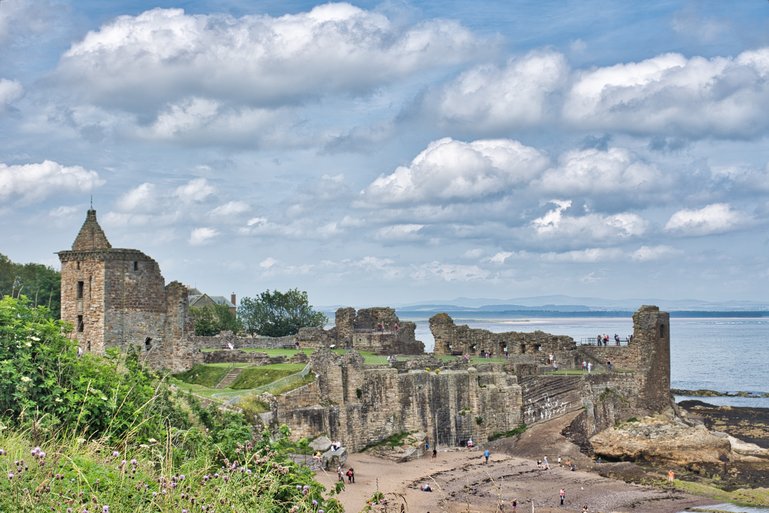
Looking Back on St Andrews Castle and the beach below
St. Andrews Castle is less than a 10-minute walk from the Cathedral along the shoreline.
You can walk through the ruins imaging how the Bishops of the Cathedral would have lived before the traumatic circumstances of the Reformation.
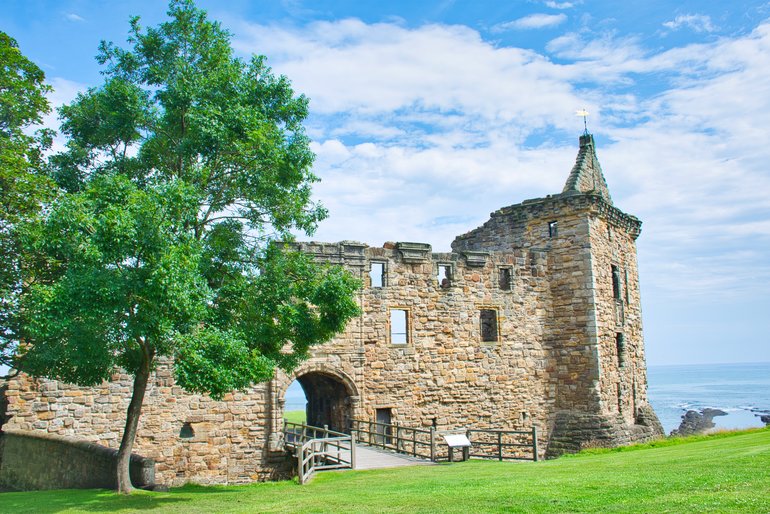
You are free to explore St. Andrews Castle at your own pace with or without an audio guide after the exhibition
You first go through the ticket office and exhibition on the history of the castle site which dates back to the 12th Century. The exhibition ends at John Knox giving one of his rousing speeches leading up to the Protestant Reformation.
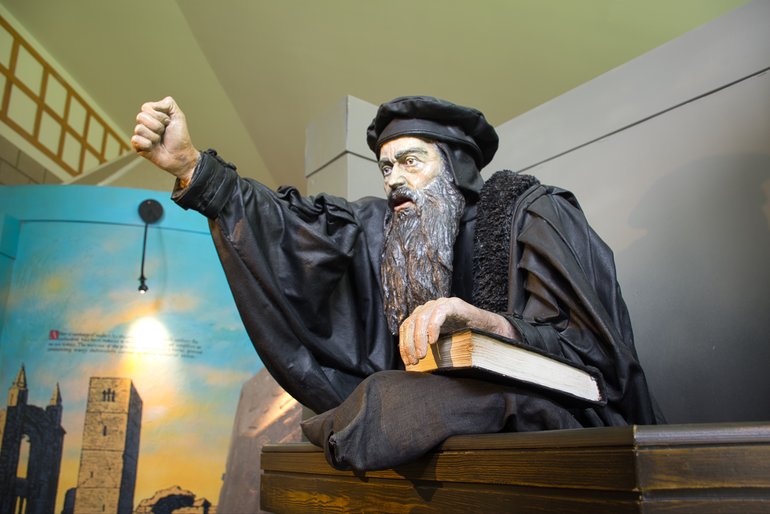
John Knox represented in the visitor centre exhibition
The Castle has been destroyed many times over the centuries, especially during the Scottish Wars for Independence as it changed hands between Scottish and English. Each time it was rebuilt afterwards even after the Protestant Reformation, it was rebuilt, only to slowly fall into ruin upon the death of its last benefactor Archbishop John Hamilton.
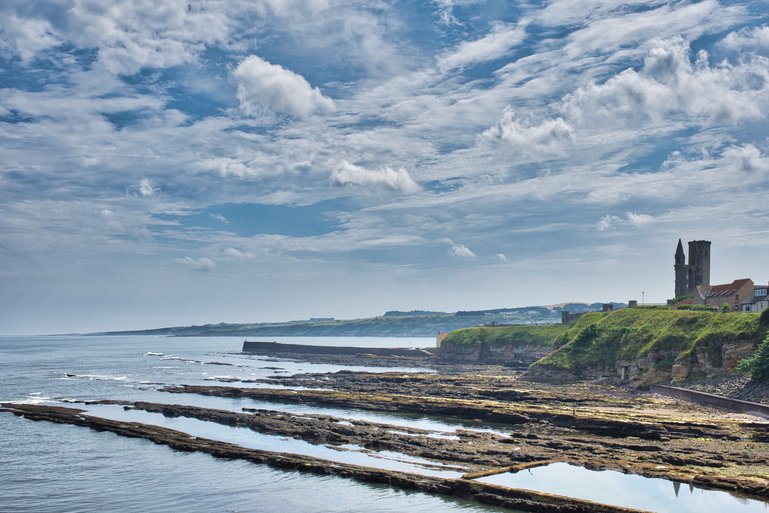
Looking back from St Andrews Castle towards St Andrews Cathedral
From the Castle viewing platforms, you can look up and down the coastline of Fife for miles.
More to See in St. Andrews
Other attractions in St. Andrews are very diverse. Here you can see one of the oldest golf courses in the world or take a walk along the beach that Chariots of Fire was filmed next to the course. There is also St Andrews Museum, Museum of the University of St Andrews and the St Andrews Aquarium that is worth a visit.
From St. Andrews you could go up to Dundee to visit the attractions there as it's only 30-minutes further up the road.
Easily accessible from Edinburgh by car, you won't be disappointed if you spend a few days in Fife with so much to do.

































